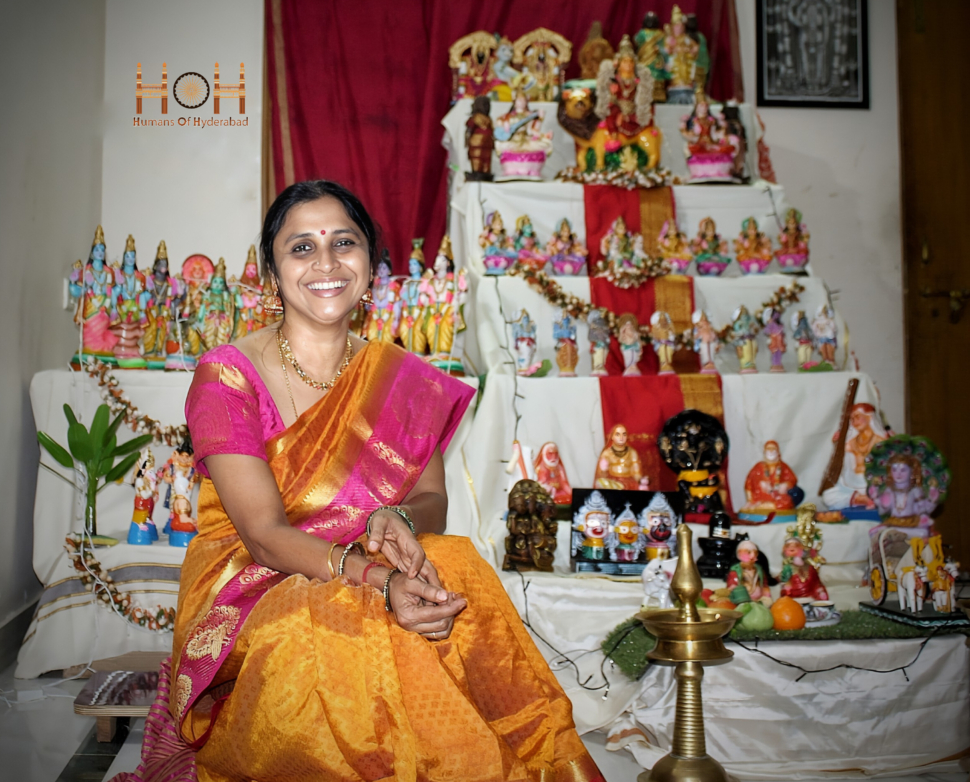“In Tamil households, Navaratri is a time of music, lights and devotion. For nine days, families set up a beautiful display of dolls called Golu, honouring Goddess Durga, Lakshmi and Saraswathi.
I still remember the Navaratris of my childhood. After our quarterly exams, we would dive into the celebrations, building the Golu steps with whatever we could find at home. There were no ready-made stands, so we used drums, buckets, old cartons or trunk suitcases, covering them neatly with my father’s or grandfather’s veshti before arranging the dolls. The clay dolls, painted in vibrant colours, were the heart of the display. We had treasured sets like the Dasaavatharam, Ashtalakshmi, Siva-Parvathi and the wooden Marapachi dolls. We even created a tiny park with toy cricketers, miniature houses and sprouted mustard seeds or ragi to add a touch of green.
Every evening, children from the neighbourhood visited each home, singing songs in front of the Golu and happily receiving sundal, a simple but delicious snack made with lentils. On Saraswathi Pooja, we placed our books, pens and musical instruments before the idol, which meant one blissful day without studying. The next day, during Punarpooja, we read at least a page from each book as a mark of respect for learning.
Golu is not only about worship but also about storytelling and community. Guests are welcomed with songs and hymns, and the arrangement of dolls often narrates scenes from epics like the Ramayana, Mahabharata or local folklore. In many homes, women exchange haldi-kumkum, small gifts and betel leaves to celebrate friendship and the strength of feminine energy. Music and classical dance performances keep the arts alive during the festival.
In our family, the tradition of Golu continues with the same enthusiasm. We now have a steel stand for the steps. The first row holds the Kalasam, Ganesha and larger idols. The next rows display Dasaavatharam, Ashtalakshmi, Ramar Pattabishekam, revered Gurus, animals, birds and the Chettiyar–Chettichi dolls selling grains and vegetables.
Traditions like Golu are more than decoration. They keep us connected to our roots, carrying forward stories, music and devotion.”
